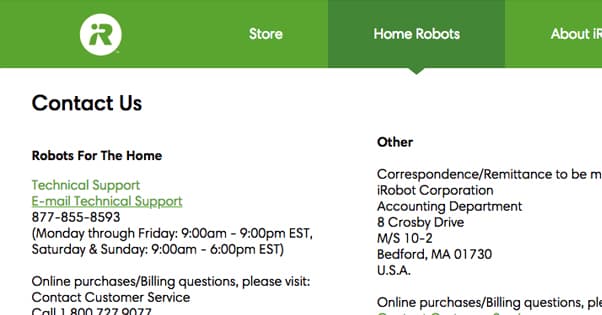How to Get Free Products and Services to Review on Your Blog
Published by Drew Hendricks • Content Marketing • Posted August 19, 2018 ContentPowered.com
ContentPowered.com
You would be surprised at how lucrative it can be to review products for a blog. It’s a hard road to start; you often end up starting out as either a lifestyle blog or a niche industry blog, both of which you typically monetize with affiliate links. Eventually, as your site grows, you can leverage your earnings and your review quality to get free stuff. Sometimes, you can even get paid for your reviews.
Step 1: Pick a Focus
I’m assuming that you already have a blog that you want to monetize in this manner. If you don’t, well, the actual first step is to start a blog. Either way, you need to pick the angle of your reviews.
Here are some ideas.
- Lifestyle blog? If you routinely blog about family, household projects, and trips you take, you can review products that work around the house. A new vacuum, a new blender, a special can opener, fancy foods or one of those meal delivery services; you have a lot of options open to you.
- Tech blog? You can review computer components, peripherals, games, gaming devices, even pre-built machines if you have the resources. This tends to be very high resource cost, though; you often need consistent software for benchmarking hardware, and rigorous testing procedures to have anything more than a superficial review.
- DIY blog? You can review tools and products you use in your projects, anything from a fancy hand saw to a wood glue to a Raspberry Pi. You can also review instructions for projects and kits.
The key is to pick a niche that plays well with the content you’re already producing. You’ve already built up an audience, however small it might be. If you pivot to start reviewing products that are simply the most available or the most lucrative, your audience might not want to read those reviews. If you’re a narrative-focused blog, like one that follows your family, it might even come across as disingenuous. You need to review products your audience is going to find useful.
Step 2: Learn to Write Great Reviews
I mean great reviews as in great quality content, not necessarily “this product is great.” In fact, you might need to start learning how to make a good 4- or 4.5-star review, rather than giving fives to everything. You’ll also occasionally want to pepper in negative reviews that aren’t paid for, to keep the opinions across your site more authentic. No one is every fully appreciative of everything, and no one ever avoids encountering a bad product once in a while.
You might want to consider using a plugin to handle specially-formatted review posts on your site. If you’re using WordPress, for example, you can use WP Review. It has different formats for reviews, but you’re going to want to pick one and stick with it consistently. Usually stars are the most commonly seen, but points work well as well. I don’t see percentages as much, but if you want to go that route, more power to you.
What makes a good product review article?
- A frame tale. In literature, a frame tale is the story wherein the characters are telling the main story. If you’ve ever read Frankenstein, it starts and ends on a boat in the arctic; everything we know of the Frankenstein tale is told by the doctor to the captain of the boat. You see this on casual food blogs a lot; you get a story of why the food was being made, before jumping into the recipe. A frame tale gives your review some context and sets it apart from the rest of the reviews of that product on the web.
- Good images. I’ll cover this in the next step.
- A consistent format. When people read your reviews they want to be able to get the information they want, and they want to know where that information is. A good format typically starts with a summary and overall verdict, then goes into each section of content individually. How was the product at performing what it was supposed to? Were the instructions for assembly or use clear? Does it seem fragile, or did it break? How does it compare to similar items you have reviewed in the past? Are there particular benefits or flaws to the product that might be relevant to users?
- A conclusion. Tie it all together at the end. You can review something positively and still mention that you’re not likely to use it because you don’t have a place for it in your routine. Final impressions and a wrap-up summary are important.
If you’re not sure about how to proceed, check out other review-focused sites in your niche. You’ll be able to pick apart their structure and learn how they’re put together. It helps if you can produce a bit of a template or outline you can use to compose posts, even if it’s just a series of basic subheadings.
The key to writing a good review, or any content really, is a good voice. Ideally you will have established a voice on your site already, but it’s never too soon to work at one if you’re not sure.
Step 3: Learn to Take Good Pictures
Taking good pictures of the products you’re reviewing is almost the most important part of the whole process. You want to make the product look good, and to do that, you probably need a good camera. Unfortunately, you just can’t match professional quality photos with a phone camera or a $50 grocery store special. You don’t have to go out and buy the fanciest DSLR on the market, of course, but you need a good camera with macro features and plenty of control. And, of course, you need to learn how to use it.
You’re also going to need to learn how to edit images afterwards to make them more appealing. That’s the secret to many of the best images you see online. No one just takes a perfect photo; they touch them up, adjust color balance, and generally edit the image to make it really pop.
Since I primarily write about web services and software, I don’t often need to take photos myself. Rather than try to parrot some random information about being a better photographer, I’ll just send you to someone who knows what they’re talking about. Check out this post for some basics, and then research any of the specific elements on their own if you need more information.
Step 4: Gather Traffic Data and Audience Demographics
Everything up to this point has been largely on the creative side of things, but if you want to get people giving you products to review, you need to make a business case for it. This means you need to have analytics installed on your site – Google analytics is perfectly fine – and you need to have data on hand.
A business giving you a product to review is essentially paying for advertising on your site. Much like any other form of paid advertising, they want to know that they’re likely to get a return on their investment. That means they want to know what kind of audience they’re looking at. Are they going to be seen by a few hundred people? A few thousand? A hundred thousand? The larger your audience, the more they’re likely to give you and pay you for the sponsored position.
At the same time, they need to know demographics. They might know that their product doesn’t do well with an audience of relatively young females, so if that’s the primary audience on your site, they’ll be less likely to want to give you a product to review, or they’ll give you a different product from their catalog.
Mostly, you just need this information on hand for if and when a business asks for it. Some will only care about traffic numbers. Some will want more information. The key is that you have the information available if they need it to make a decision.
Step 5: Reach Out to Brands
With a good site under your belt and data in your hand, it’s time to start reaching out. Most brands aren’t going to go out looking for people to give products to; they have all kinds of other marketing going and don’t need to put in the legwork. Instead, you need to go to them.
The first step, then, is to look for companies that have products that will be relevant to both you and your audience. You can build a wishlist, but keep in mind that a lot of companies might not want to give out review copies. Maybe they’ve been burned before, or maybe it’s just a hassle. You never know.
One thing you can do is go look at other websites in your niche that write reviews. I know I mentioned this up above as a way to get a feel for the review format, but now you’re looking for products that are commonly reviewed. Are there specific companies or brands that tend to show up on almost every site? You can bet these companies are more willing to work with bloggers for sponsored posts.
When you’re contacting a company that has more than one product, try to think about products in their catalog that aren’t well represented with reviews online. If a brand offers three products, and the first two have a dozen different reviews but the third only has two, you’re more likely to get a copy of the third to review. The company doesn’t necessarily need more reviews of the first two for marketing purposes.
Of course, this only applies when the products are roughly equivalent. If they offer a $5 product, a $10 product, and a $100 product, you can bet the $100 product probably has fewer sponsored reviews. It’s simple, of course; the brand just doesn’t want to hand out their expensive flagship product on a whim.
When actually contacting brands, you absolutely need to get good at writing pitch emails. You need to have a compelling subject line that breaks through the chaff of customer service requests right away. You need to get right to the point; you have a blog, you’re interested in writing a sponsored post, you’d prefer X product but are willing to work with whatever they have. Your traffic numbers and so forth are available. If you have proof of past companies working with you successfully, provide it.
Many companies will reply with a form letter denial or will ignore your request. You can follow up with them by emailing specific people in their marketing department, if you can find them. Check LinkedIn and Twitter. You can send messages via social media, and even snail mail if you really want to work with one specific company.
You will likely need to work out the details with someone from the company directly, and you may need to sign a contract. Make sure that the terms of any contract you sign are favorable and that you aren’t poised to be screwed if your post doesn’t perform well enough.
I should also note here that you should keep in touch with any company you work with. Keep them appraised of the process, with an email when you receive the product, one when your post goes live, and at least one later with an analysis of the results on your end. They likely will be monitoring performance from their end, so it’s good to have data from both sides. The more you keep in touch, the more likely they are to work with you again in the future.
Step 6: Remember Disclosure
The Federal Trade Commission has laws requiring disclosure for any kind of sponsored post. This means if you’re paid for the post, but also if you get products in exchange, if you get a coupon, gift cards, or compensation for an event admission. Just like using affiliate links, you need disclosure.
Usually, all you really need is a “this is a sponsored review” note at the top of the post. To be absolutely certain, however, you can go ahead and read about it directly from the FTC.











